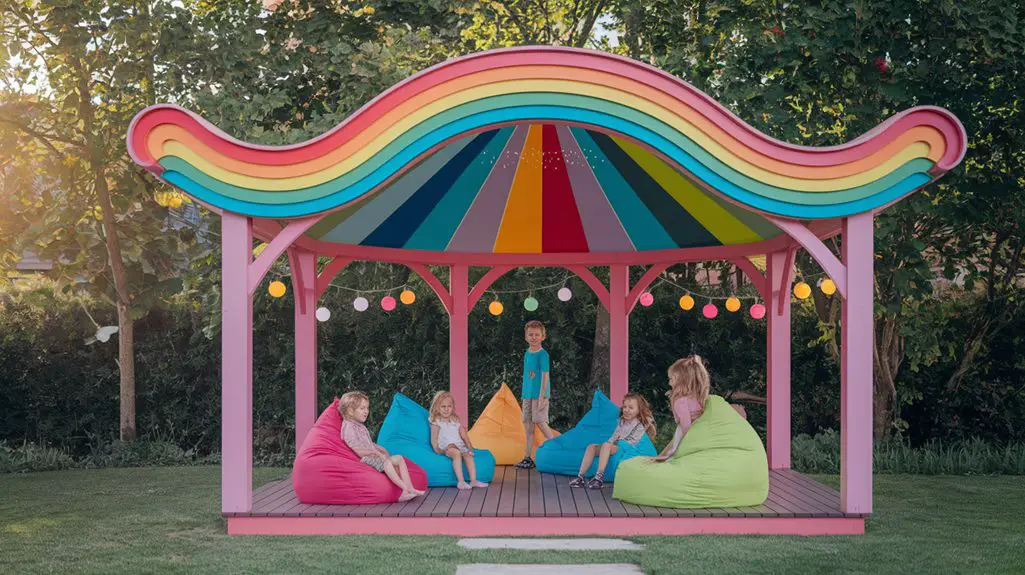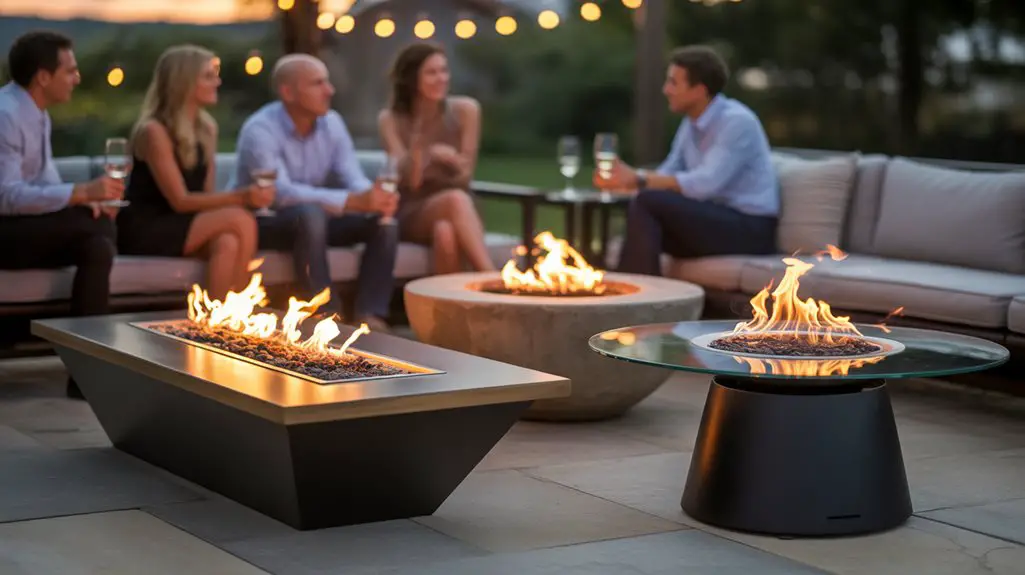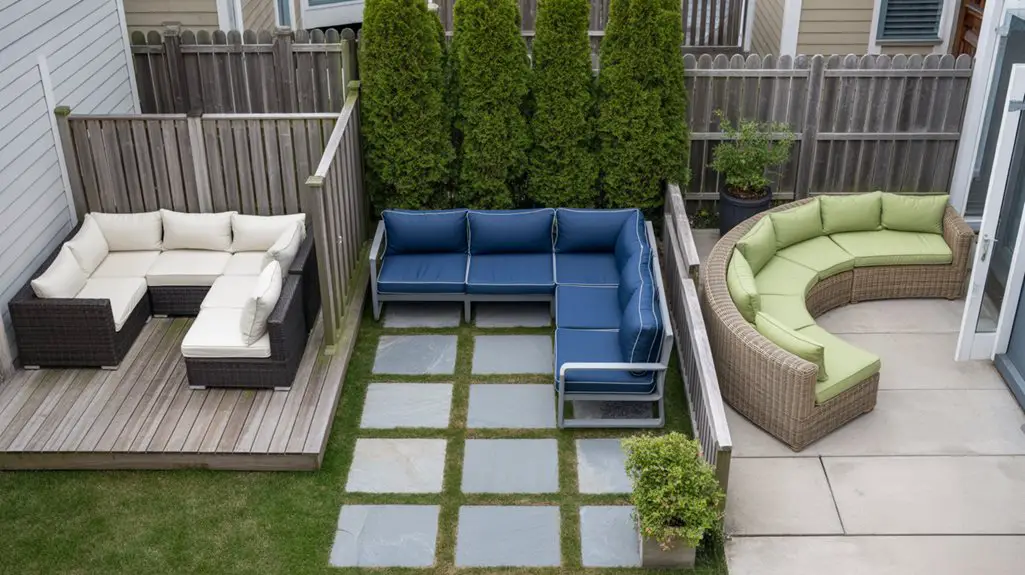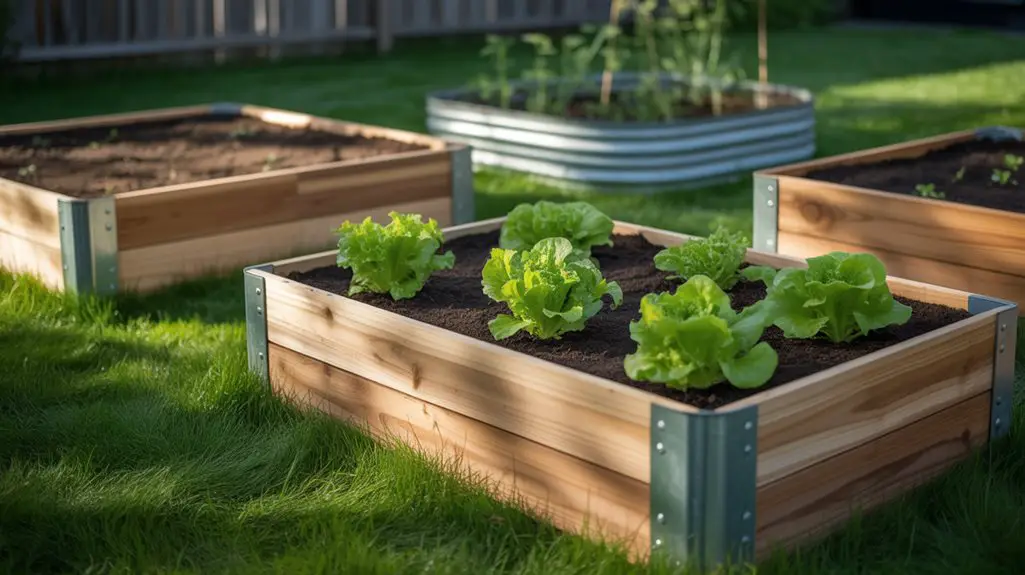Nothing captivates a child's imagination quite like their very own magical outdoor haven. You'll find that kid-friendly gazebos balance vital safety elements with opportunities for creative play and development. The most successful designs incorporate rounded edges, non-toxic materials, and age-appropriate dimensions while integrating sustainable elements that connect children with nature. These thoughtfully crafted spaces can transform your backyard into a center for exploration, learning, and healthy outdoor engagement. What specific features will best suit your children's unique needs?
Playhouse-Style Gazebos With Child-Safe Features
Playhouse-style gazebos transform outdoor spaces into magical havens where children can safely explore their imaginations. When selecting these structures, prioritize rounded edges and non-toxic, splinter-free materials like cedar or sustainably harvested bamboo.
Opt for designs featuring shatterproof windows, properly anchored foundations, and soft, rubberized flooring to minimize injury risk.
You'll want to incorporate child-height railings (30-36 inches) with vertical balusters spaced less than 4 inches apart to prevent climbing accidents. Consider modular designs that grow with your children, incorporating convertible elements like removable art stations or collapsible seating.
For ecological integrity, choose gazebos with living roofs that support pollinator habitats while providing natural insulation. Engaging children in exciting backyard games can further enhance their outdoor experience and promote physical activity.
Solar-powered LED lighting offers safe illumination without compromising your environmental footprint or your child's playtime adventure.
Colorful Canopy Designs That Spark Imagination
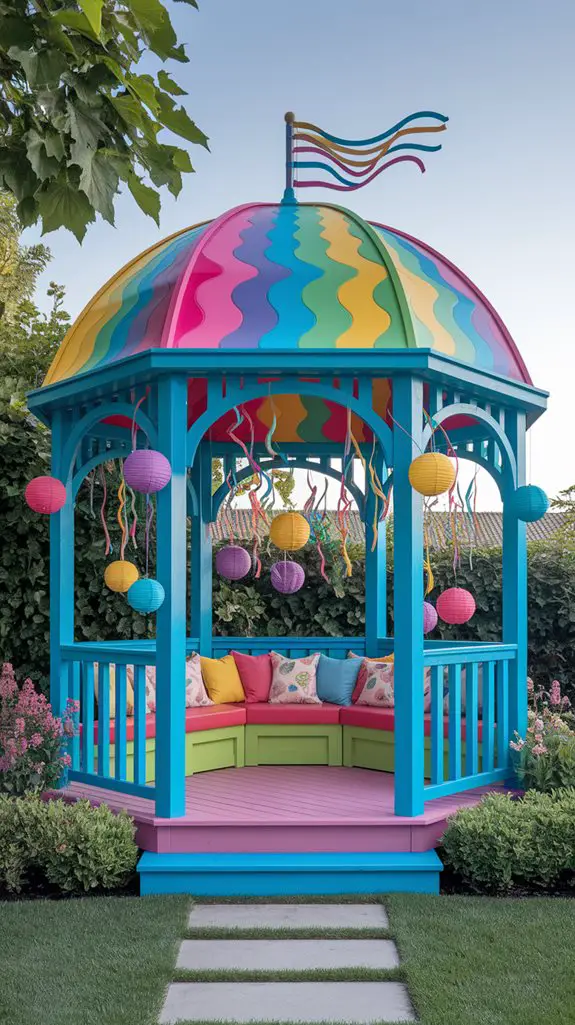
Vibrant canopies transform standard gazebos into immersive wonderlands where children's imaginations can flourish without limits.
You'll find that UV-resistant recycled polyester fabrics in rainbow gradients or celestial patterns offer both visual stimulation and sun protection (UPF 50+).
Consider installing interchangeable canopy systems that allow seasonal adjustments—lightweight mesh for summer ventilation and waterproof options for rainy days.
Biomimetic designs resembling forest canopies or ocean waves particularly engage children's neural development through nature-inspired sensory experiences.
For ideal sustainability, select bamboo-blend or hemp canvas materials treated with non-toxic dyes.
These eco-friendly alternatives minimize environmental impact while ensuring longevity. Additionally, utilizing sustainable materials for your outdoor patio can enhance the overall aesthetic and functionality of the space.
Integrate LED light strands powered by small solar panels to extend playtime naturally into evening hours, creating magical shadow play opportunities that stimulate cognitive development while maintaining your gazebo's carbon-neutral profile.
Mini Gazebos Perfectly Sized for Young Children

Every mini gazebo built specifically for children should prioritize scale-appropriate dimensions—typically ranging from 4'×4' to 6'×6' footprints with ceiling heights of 4-5 feet.
These proportions create an intimate space that's both accessible and comfortable for young users while maintaining structural integrity.
When selecting materials, opt for sustainable choices like FSC-certified cedar or recycled composite boards that withstand weather conditions without releasing harmful toxins.
Incorporate rounded edges and non-toxic finishes to guarantee safety without compromising design integrity.
You'll find that modular components work exceptionally well, allowing the structure to evolve as your child grows.
Consider integrating sensory elements—natural ventilation patterns, translucent roof panels for dappled light effects, or textured wall sections—to create a multisensory environment that supports cognitive development while connecting children to natural elements.
Additionally, incorporating cozy fire pits can enhance the overall atmosphere, making it a perfect gathering spot for family and friends.
Multi-Level Gazebo Structures for Active Play
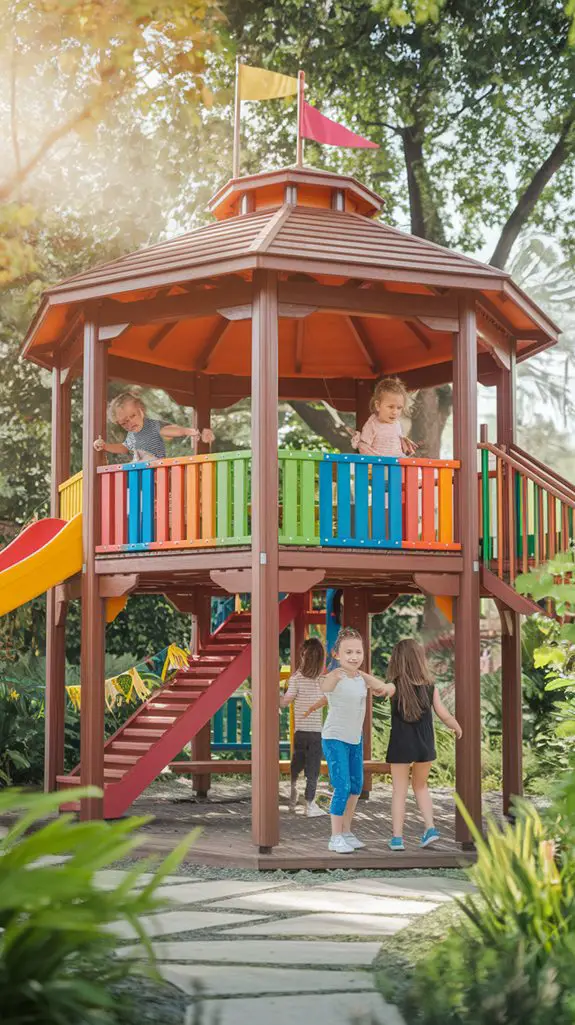
Multi-level gazebo structures convert standard outdoor shelters into dynamic play environments that challenge young bodies and minds simultaneously.
These elevated designs integrate natural play principles with architectural ingenuity, creating sustainable outdoor spaces that grow with your child's developing abilities.
For ideal developmental benefits, consider these multi-level features:
- Interconnected platforms at varying heights (6-24 inches) to develop proprioception and spatial awareness
- Integrated climbing elements using FSC-certified wood for eco-friendly vertical challenges
- Semi-enclosed upper levels with permeable boundaries providing safety while maintaining visibility
- Shift zones between levels that require different movement patterns (crawling, stepping, balancing)
The biophilic design principles behind multi-level gazebos create microclimates that moderate temperature extremes while teaching children about vertical space utilization—an often-overlooked dimension in conventional playground designs. Additionally, incorporating natural play principles can enhance children's creativity and problem-solving skills during their playtime adventures.
Nature-Themed Designs That Blend With Garden Spaces
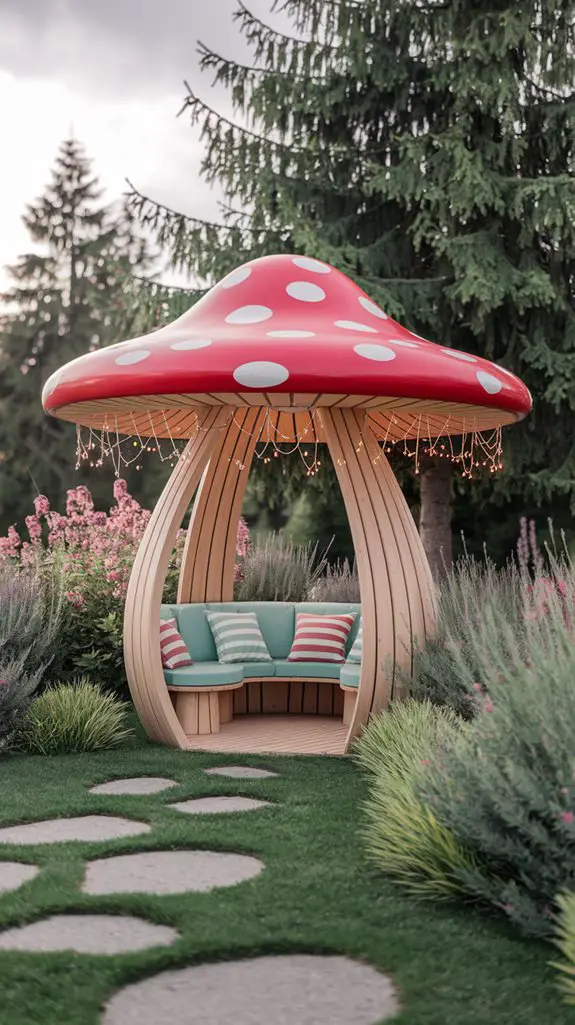
When incorporating gazebos into existing garden landscapes, nature-themed designs create seamless connections between built structures and living environments, fostering children's innate biophilia.
Consider integrating living walls where climbing plants like jasmine or honeysuckle can flourish, providing sensory stimulation through fragrance and texture.
You'll find that timber structures with untreated cedar or redwood blend harmoniously while offering natural resistance to decay.
Implement thatched or living roofs that support native wildflowers, creating microhabitats for beneficial insects that children can observe up close.
Root your design in biomimicry principles—perhaps a gazebo resembling a bird's nest or honeycomb structure.
These organic forms not only captivate children's imagination but serve as informal outdoor classrooms where they'll develop ecological literacy through direct engagement with the natural world surrounding them. Additionally, incorporating creative water features can enhance the sensory experience, attracting wildlife and promoting exploration.
Weather-Resistant Materials for Year-Round Enjoyment
Beyond nature-inspired aesthetics, material selection determines how your children's gazebo withstands seasonal challenges while maintaining eco-integrity.
When choosing materials for year-round enjoyment, prioritize sustainability alongside durability to create a structure that serves both your children and the environment.
- Cedar and redwood – Naturally rot-resistant woods that weather beautifully without chemical treatments, ideal for humid areas and safe for small hands.
- Recycled composite decking – Offers wood-like appearance with superior water resistance and zero splinters, typically lasting 25+ years.
- Powder-coated aluminum framing – Lightweight yet sturdy alternative that won't rust, perfect for coastal environments.
- Hemp-reinforced bamboo – Emerging eco-material that combines tensile strength with biodegradability, suitable for temporary structures that can be composted later.
Additionally, consider placing your gazebo in an area with optimal sunlight exposure to ensure a comfortable play environment for your children.
Convertible Gazebo Spaces That Grow With Your Children
Creating adaptable gazebo spaces guarantees your investment evolves alongside your children's developmental stages, preventing costly replacements every few years. Implement modular bench systems with removable components that transform from toddler-friendly seating to teen lounging areas. Consider adjustable-height tables with weatherproof surfaces that accommodate everything from finger painting to homework sessions. Install convertible wall panels that alternate between climbing surfaces for younger children and privacy screens for adolescents seeking independence. Incorporate built-in storage solutions with interchangeable organizers—perfect for housing blocks and toys initially, later repurposed for gaming equipment or study materials. Utilize sustainable materials like bamboo or recycled composite decking that withstand the test of time while minimizing environmental impact. Select neutral structural elements paired with easily replaceable decorative features to refresh aesthetics as your children's preferences mature. Additionally, integrating creative pergola designs can enhance the multifunctionality of your gazebo space, providing shaded areas for various activities.
Sensory Garden Gazebos for Educational Play
Sensory garden gazebos offer an immersive outdoor learning environment that synthesizes play with developmental education, building upon the adaptable foundation we've established.
These specialized structures integrate natural elements with thoughtfully designed features that stimulate all five senses while fostering ecological awareness and cognitive development. Additionally, incorporating elements that promote wildlife habitat creation can enhance the ecological impact of your gazebo.
When designing your sensory garden gazebo, incorporate these essential elements:
- Tactile stations – Install weather-resistant panels with varied textures like smooth river stones, rough bark, and soft moss.
- Auditory features – Hang wind chimes, bamboo percussion instruments, and rain chains for acoustic exploration.
- Visual stimulation – Plant colorful native species and install prisms that cast rainbow patterns.
- Aromatic zones – Surround the structure with fragrant herbs and flowers that release scents when touched.
DIY Customizable Gazebo Kits for Family Projects
Building your own gazebo together as a family not only provides a functional outdoor structure but also cultivates lasting bonds through collaborative craftsmanship.
Select modular kits featuring sustainable bamboo or reclaimed cedar components that can be assembled without specialized tools, making them accessible for children's participation.
Look for designs with customization options—interchangeable roof panels, removable side screens, and adjustable height posts—allowing your structure to evolve with your family's needs.
Children can contribute by sanding edges, arranging components, and personalizing with non-toxic paints.
Consider kits with integrated education elements such as solar-powered lighting systems or rainwater collection features that teach sustainability principles while building. Additionally, explore contemporary gazebo designs that inspire creativity and enhance the aesthetics of your outdoor space.
The most effective family-oriented gazebo kits balance structural integrity with age-appropriate assembly tasks, ensuring safety without compromising the hands-on learning experience.
Safety Considerations for Kid-Friendly Gazebo Installations
When installing gazebos designed for children's use, safety must take precedence over aesthetic considerations.
Prioritize sustainable, non-toxic materials that withstand weather conditions while providing a secure play environment. The structure should accommodate children's natural curiosity without exposing them to unnecessary hazards.
- Round all corners and edges – Eliminate sharp protrusions using eco-friendly wood caps or recycled rubber bumpers to prevent injuries during active play.
- Install proper drainage systems – Guarantee water flows away from the foundation to prevent slippery surfaces and structural deterioration.
- Use non-toxic, VOC-free sealants – Protect wooden elements while maintaining air quality within the play space.
- Secure the foundation thoroughly – Anchor the structure with deep, sustainable footings that resist high winds and prevent tipping hazards.
Incorporating elements from rustic outdoor kitchens can enhance the aesthetic while ensuring that the materials remain safe for children.
Conclusion
Creating enchanting, child-centric gazebos guarantees growth while protecting precious playtime. You'll find fantastic features from playhouse designs to purposeful, pint-sized structures satisfy safety standards while stimulating sensory development. Whether working with wooden, weather-resistant materials or delightful DIY designs, these sustainable spaces serve as magical microenvironments where children connect with nature. Consider customizable configurations that convert as children mature, maximizing multi-seasonal enjoyment throughout their developmental journey.

